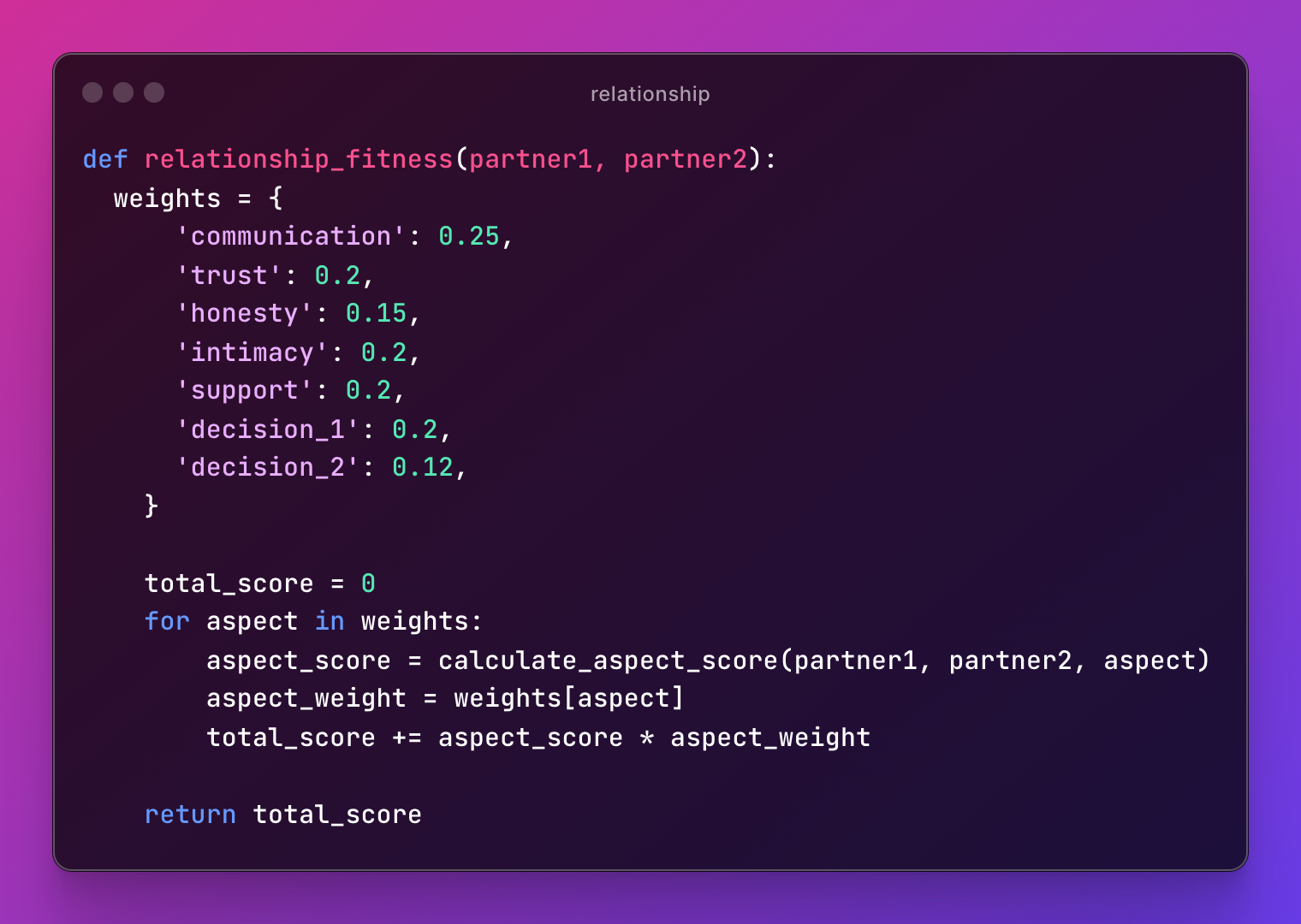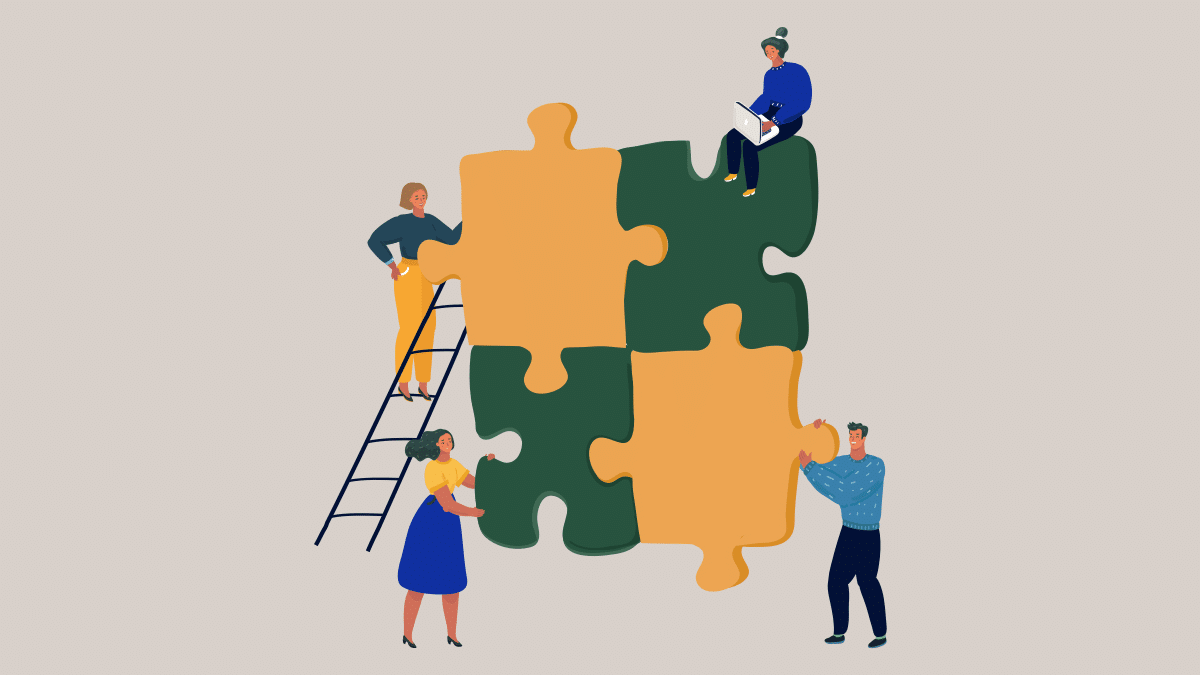A fitness function is a mathematical formula that captures what the system is trying to maximize. It's the North Star that guides the algorithm's endless stream of decisions, ensuring that each step ultimately leads to the desired end state.

When it comes to our most intimate relationships - be it with a romantic partner, close friend, or family member - the way we define our fitness function can have profound implications. Put simply, are we optimizing for the mutual happiness and flourishing of both individuals? Or are we primarily concerned with our own personal happiness and fulfillment?
This is a critical question, because the answer will determine how we navigate the inevitable ups and downs, conflicts, and compromises that arise in any close relationship.
If our fitness function is centered on the "happiness of both", then we approach the relationship as a true partnership. We're committed to creating an environment where both people can thrive. We're willing to make sacrifices, compromise, and put in the hard work required to ensure that our loved one's needs are met, even if it means temporarily subordinating our own desires.
This collaborative mindset can foster deep trust, intimacy, and a profound sense of shared purpose. It allows the relationship to become a synergistic whole that's greater than the sum of its parts. And it cultivates a beautiful reciprocity - I help you, you help me; we both grow and prosper together.

But what if our fitness function is oriented solely around the "happiness of oneself"? In this case, the relationship becomes more transactional. We're there to get our own needs met, period. Any concessions or compromises we make are done begrudgingly, out of a cold calculation of what we "have to" do to keep the other person around.
This self-centered approach inevitably leads to resentment, distance, and an ever-present threat of the relationship unravelling. After all, if I'm always prioritizing my own happiness over yours, why should you stay? The long-term sustainability of the bond is put at risk.
Of course, the reality is that most of us occupy a spectrum between these two archetypes. We have moments where we genuinely want our partner to thrive, and other moments where we're laser-focused on our own desires. The healthiest relationships are those where we're consistently working to shift the balance towards the "happiness of both" end of the spectrum.

Marriage, for example, is often viewed as the ultimate expression of love and commitment. But a key realization is that, marriage and even happiness itself are not the end goal, but rather byproducts of aligning our fitness functions with the growth and fulfillment of both people. When we orient ourselves in that direction, the marriage becomes a beautiful reinforcing loop where each person helps the other become their best self.
The same goes for deep friendships, familial bonds, and any other intimate relationship. The quality of the connection comes down to the degree to which our individual fitness functions are in sync and working towards a shared vision of mutual thriving.
It's a powerful framework for reflecting on our priorities and decision-making processes. Are we truly optimizing for what matters most? Or are we getting caught up in proxies and side effects, rather than the core essence of what we're trying to achieve?